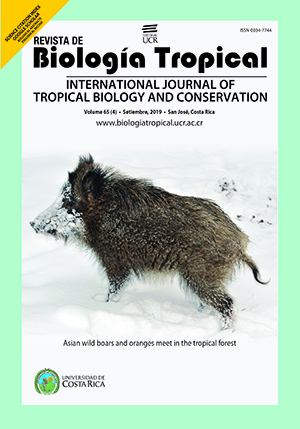Resumen
The understanding geography and ecology role in the distribution of Solanum lycopersicum var. cerasiforme is essential for knowledge of areas with potential for tomato production and conservation. In the present work, we analyzed the environmental conditions of the center of origin of the species in South America and we compared them with records in Mexico, particularly in the state of Veracruz, tomato domestication region. We used eight climatic variables predictors and the latitude and longitude data of the species collections registered in literature and database to run two models, the first one for the south of America and the second one for Mexico. We evaluated the models by using the partial ROC method; we conducted a niche similarity and equivalency test to compare both models. We carried out a fieldwork to observe new records of the species and register the environmental conditions in which they growth. The main climatic variables of temperature were the most important for the ecological niche modeling of South America and the ecological niche modeling of Mexico. The models performed very well cause the partial roc test showed significant value for both models1.86 y 1.71 (p<0.0001). Based on our fieldwork, we registered 27 new records, we can find wild tomatoes between 14 and 2 100 amsl in areas with a range of temperature average 19-24 ºC and annual average precipitation 1 166-2 260 mm. Finally, we find out that there is climatic differentiation between South America and Mexico (most areas of the state of Veracruz) for the species.
##plugins.facebook.comentarios##

Esta obra está bajo una licencia internacional Creative Commons Atribución 4.0.
Derechos de autor 2019 Gino Delices, Raúl Otto, Rosalia Nuñez Pastrana, Pablo Andrés Meza, Ricardo Serna-Lagunez, Roberto Gamez Pastrana






